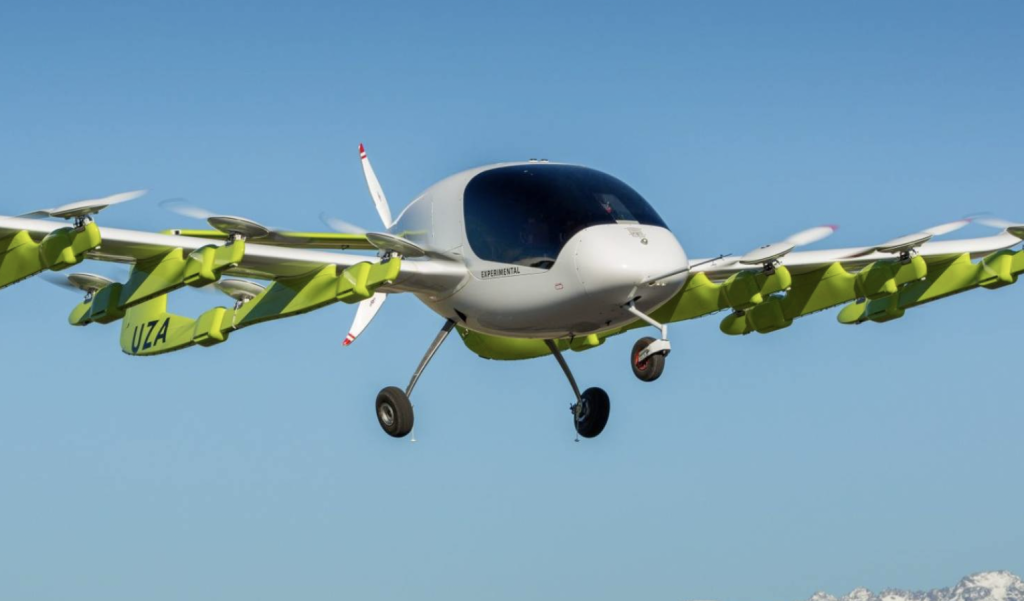There is a revolution happening in aviation. Spurred by public interest and government initiatives to lower carbon emissions, aerospace companies are vying to develop and introduce all-electric and hybrid-electric airplanes to market. In particular, a new class of eVTOL aircraft currently in development, or electrically powered vertical takeoff and landing vehicles, is generating an unusual amount of interest, coupled with an unexpected inflow of monetary capital.
Unlike traditional airplanes, which operate from airports, eVTOL planes are suitable for air taxi operations, being able to take off and land in a very small area, just like helicopters. This capability offers the promise of Urban Air Mobility, potentially transforming the aviation landscape. Imagine taking an “air taxi” from downtown Manhattan to downtown Washington DC, the whole trip taking less than 30 minutes in total. Flying above the traffic, yet unencumbered by having to drive to and from the airport, the air taxi concept previously limited to the use by the rich and powerful, is about to become a reality for the rest of us.
Attractive but risky investment
One of the leading eVtol start-ups, Beta technologies, has just closed this April series B funding round of $375 million, bringing the company valuation to $1.4 billion. This is despite its ALIA aircraft still being in the flying prototype stage, expected to enter commercial service no earlier than late 2024 in the best case. Beta’s primary competitor, Joby Aviation (NYSE: JOBY), is awash in even more cash. Joby became a publicly-traded company in August 2021 after a merger with SPAC Reinvent Technology Partners. Joby debuted at $10 per share, but after reaching a peak of $14, its share price began a slow decline, down to approximately $5 now, bringing the company’s market cap to $3.4 billion. This is an incredible amount of investor funding, considering that, like Beta, Joby’s eVtol aircraft remains at the prototype stage, with the company not generating any revenue other than via investment funding. In fact, Joby lost one of its two prototypes in a crash in February 2022. As the aircraft was remotely piloted, no fatalities ensued, but the event nonetheless sent a chill down the investor’s spines.
An even more egregious case involves the German eVtol developer Lillium (stock: LILM). Like Joby, Lillium became a publicly-traded company via SPAC, except on the Nasdaq stock exchange. While its initial stock price was also $10 per share, Lillium stock experienced a more rapid decline, briefly reaching a low of $2.16 per share once it became public, the company’s founder and CEO had no practical aerospace engineering or aviation sector experience, and the aircraft’s range claims were overly inflated. Subsequently, multiple stockholder rights law firms began investigations of potential securities fraud, a likely attempt to disheartened investors to recoup their money. Lillium stock has rebounded somewhat to just over $3, but that still represents a 70% loss for the early investors. The dream of making it big by investing in electric airplane air taxis has not proven to be a wise choice thus far.
What the near future might bring
Despite the losses suffered by investors so far, the flying taxi promise still holds considerable potential. According to a recent study by business management consultants Roland Berger, by 2050, we can expect a global fleet of 160,000 eVTOL airplanes. At this time, there are over 300 eVTOL vehicles in development, in addition to the ones by Beta, Joby, and Lillium. The biggest challenge for these companies remains aircraft certification, a detailed engineering and testing process which involves showing the design meets thousands of strict technical standards. According to an aerospace engineering expert and a Transport Canada delegate working on eVTOL certification, many of these technical standards are still in development, making it difficult for the companies to comply. In other words, unlike traditional airplanes, which are designed to existing requirements, eVTOL companies have little choice but to be the pioneers and work together with their respective government regulators to adapt and expand the existing regulations and design standards to the new technology.
The challenge for the investor is picking the right horse to bet on in this race. Over the next several years, we can expect the herd to thin considerably. Many eVTOL developers will run out of funding before their projects are completed. Others may join forces together, leading to market consolidation.




